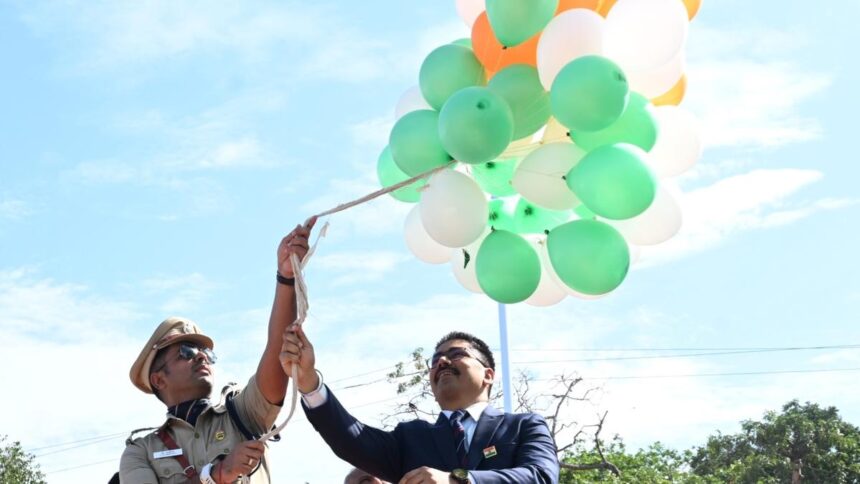
DU said the full cut-off list was made public to meet long-standing transparency demands from student groups.
| Photo Credit: SUSHIL KUMAR VERMA
NEW DELHI
After a three-year gap, Delhi University (DU) on Sunday released the detailed cut-off scores across categories for each of its 1,528 course-college combinations, a move aimed at restoring transparency in the undergraduate admission process.
The cut-offs, which are based on the Common University Entrance Test (CUET) scores, range from a high of 950 marks out of 1,000 to as low as 65, highlighting the sharp variation in demand across programmes and institutions. The 89-page document, now available on DU’s website, marks a shift from the past three years.
The university stopped publicly disclosing this data after the CUET replaced board exam-based admissions. Since then, students could only view cut-offs for courses on their preference list via the Common Seat Allocation System dashboard. This meant the overall cut-off trends remained out of reach for most students. However, following repeated requests from student groups for a “more open and transparent system”, the university has made the complete list public once again.
While this data won’t impact students currently in the admission process as preferences can no longer be changed, it is expected to serve as a useful reference point for future applicants.
Marks matrix
Among the highest cut-offs were those for top-ranked colleges such as Hindu College, St. Stephen’s, Miranda House, Lady Shri Ram College, and Shri Ram College of Commerce. Hindu College had the highest recorded cut-off at 950 (out of 1,000) for BA (Honours) Political Science, followed by 936 for its BA programme in History and Political Science.
The CUET scores are not uniform in total marks across all subjects. “There are two types of scores. Programmes that require marks in four subjects, such as Humanities, Computer Science, and Mathematics are scored out of 1,000. Others, such as Botany, Zoology, Electronics, and Physics require three subjects and are scored out of 750,” a university official explained.
Some language programmes had significantly lower cut-offs. The BA (Hons.) Hindi course at Mata Sundari College for Women had a cut-off of just 65, while Zakir Hussain Delhi College’s BA (Hons.) Urdu had a cut-off of 111.
This year, DU received 2.39 lakh completed applications in the second phase of admissions for 71,642 seats across 79 undergraduate programmes in 69 colleges and departments. On Saturday, the university made 93,166 allocations.
North dominance
The highest number of applicants came from Delhi (77,900), followed by Uttar Pradesh (54,278), Haryana (24,206), and Bihar (17,173), a DU official said. Together, these four States accounted for 72% of the total applications.
While some faculty members have expressed concerns over limited regional “diversity” in classrooms, a university official said the applicant pool does reflect national representation. The lowest number of applications came from Goa (48), the Andaman and Nicobar Islands (61), and Mizoram (65).
As per DU’s schedule, candidates can accept allocated seats until July 21. Colleges must approve and verify applications by July 22, and the deadline for fee payment is July 23.
Published – July 21, 2025 01:12 am IST
















